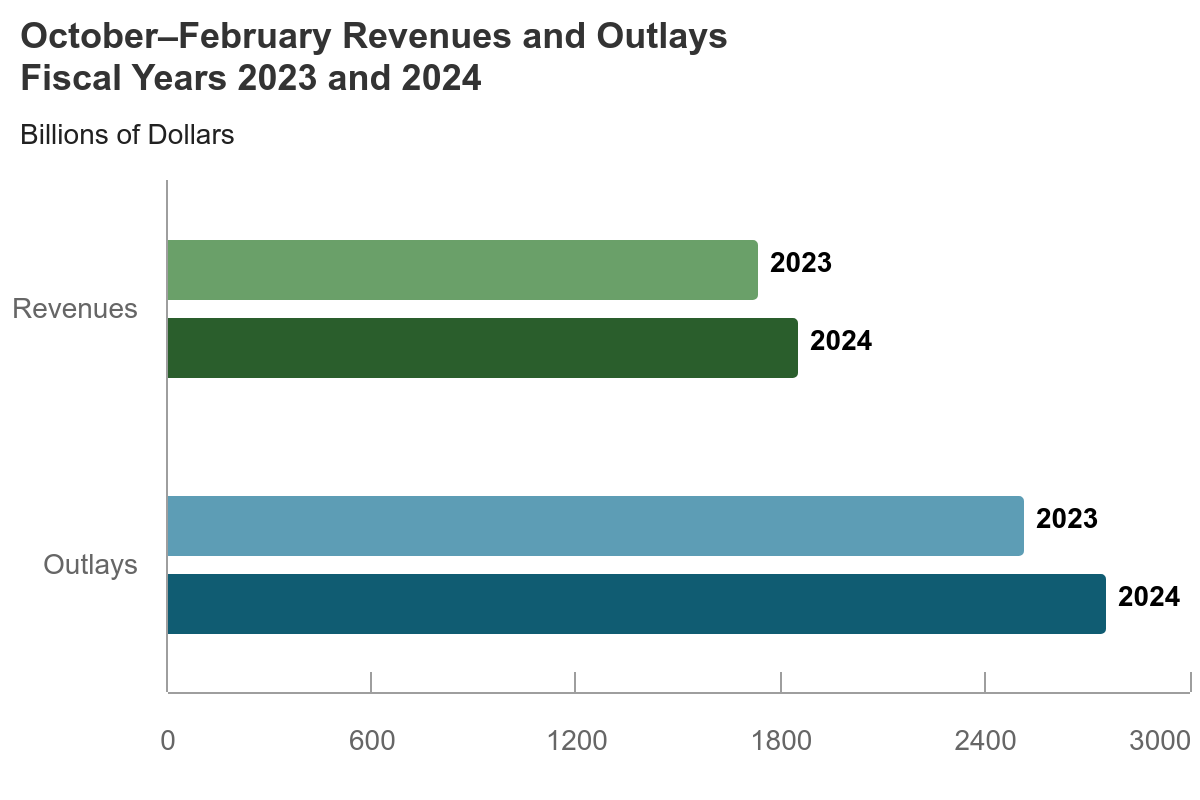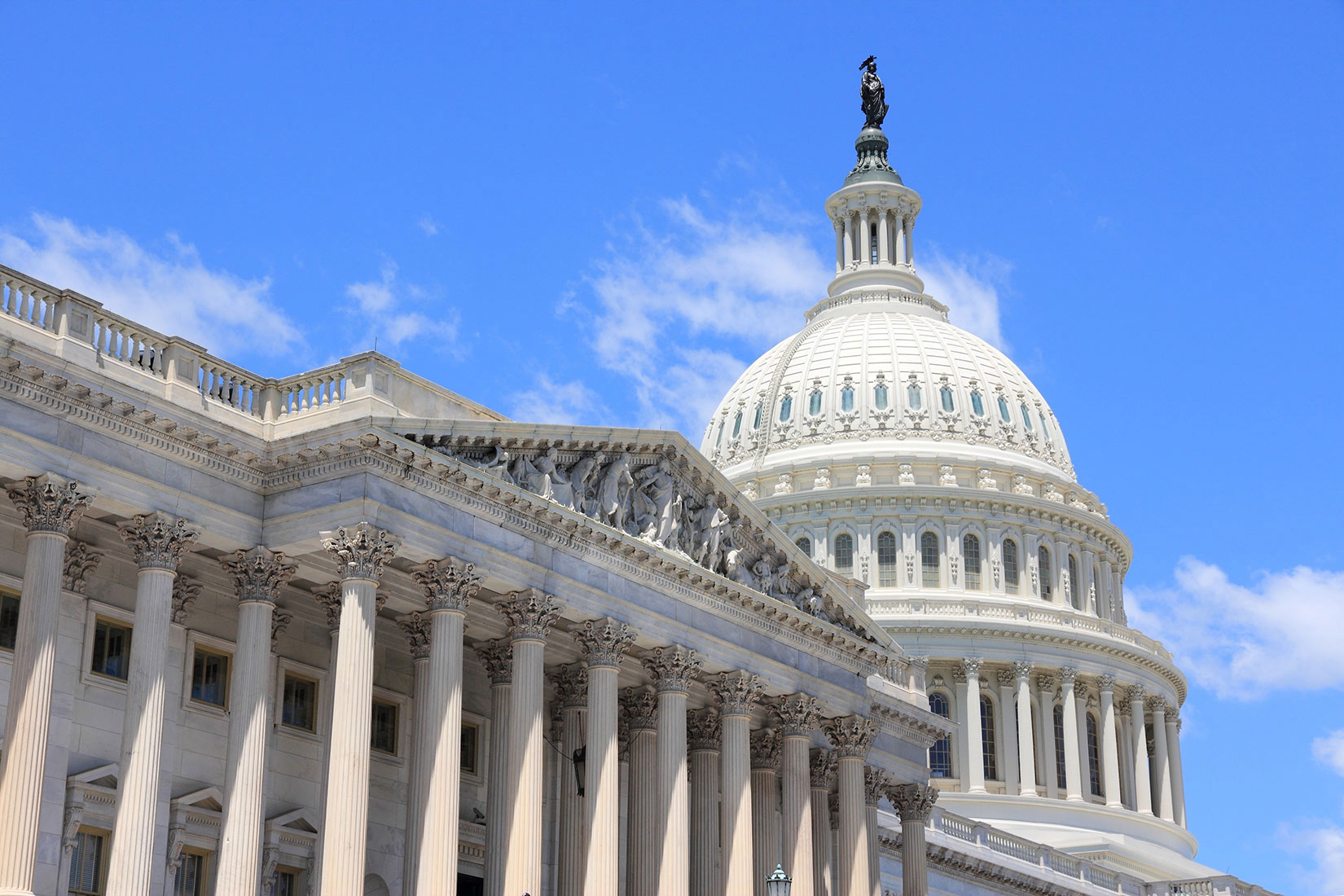CBO will publish "The Long-Term Budget Outlook: 2024 to 2054" on March 20 at 2 p.m. The report will provide projections of federal spending, revenues, deficits, and debt for the next 30 years.
CBO Blog
The federal budget deficit totaled $830 billion in the first five months of fiscal year 2024, CBO estimates. That amount is $108 billion more than the deficit recorded during the same period last fiscal year.
CBO describes the role of Federal Home Loan Banks (a government-sponsored enterprise) in financial markets, their financial condition, the value of the federal subsidies they receive, and the risks they pose.
CBO compares the housing standards used to determine the military’s basic allowance for housing (BAH) with the housing rented by comparable civilians. CBO also compares BAH rates with the rental costs paid by those civilians.
View CBO’s budget infographics to see how much the federal government spent and took in during fiscal year 2023, as well as broader trends in the budget over the past few decades.
CBO describes how funding for the IRS affects CBO’s revenue projections and how CBO estimates the revenue effects of rescissions of such funding. CBO also estimates the budgetary effects of rescinding varying amounts of the IRS’s funding.
CBO provides an overview of greenhouse gas emissions in the manufacturing sector, presents projections of future emissions, and explains how uncertainty about economic conditions, fuel prices, and technology affects those projections.
CBO's Director, Phillip Swagel, discusses his most recent and upcoming presentations about the projections in CBO’s report, "The Budget and Economic Outlook: 2024 to 2034."
CBO’s Director, Phillip Swagel, testifies before the House Budget Committee.
CBO’s Director, Phillip Swagel, discusses the current budget and economic outlook.









